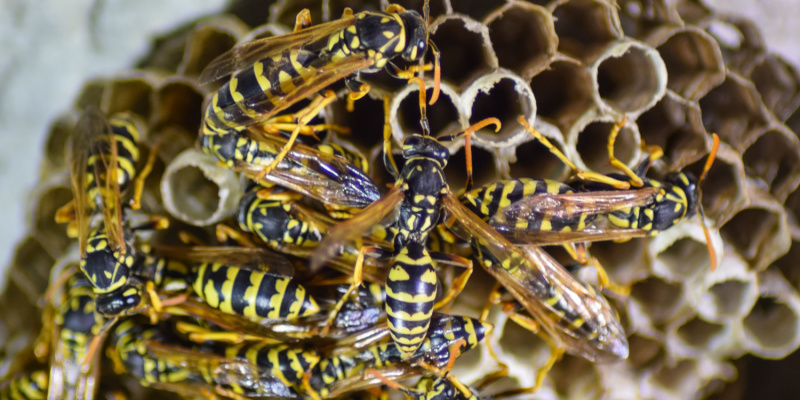Discovering a wasp nest on your property can be a cause for concern. While wasps play a vital role in pollination and insect control, their presence near human activity can pose potential risks. Removing a wasp nest requires careful planning and execution to ensure your safety and the well-being of these beneficial insects. Here are the steps to safely get rid of a wasp nest, helping you confidently navigate the process.
1. Identify the Wasp Species
Before attempting to remove a wasp nest, it’s essential to identify the species you’re dealing with. Different wasp species exhibit varying behaviors and nest characteristics. Yellowjackets, for example, build papery nests with a visible entrance hole, while mud daubers create distinctive mud nests. Knowing the species can help you determine the best approach for removal.
2. Choose the Right Time
Timing is crucial when removing a wasp nest. The best time to attempt nest removal is during the early morning or late evening when wasps are less active and most of them are inside the nest. Cooler temperatures during these hours reduce the likelihood of encountering aggressive wasps.
3. Gather Safety Gear
Protective clothing is essential to minimize the risk of stings during nest removal. Wear long sleeves, pants, gloves, and a hat with a veil or netting to shield your face. Ensure that clothing is light-colored, as dark colors may provoke wasps. If you’re allergic to stings, hiring a professional pest control service is advisable.
4. Choose a Removal Method
There are a few methods to consider for removing a wasp nest:
- Chemical Insecticides
Some commercial insecticides are designed specifically for wasp nest elimination. Choose a product labeled for wasp control, and follow the manufacturer’s instructions carefully. Apply the insecticide during the recommended time to increase its effectiveness.
- Soap and Water Solution
A dish soap and water mixture can be an effective and environmentally-friendly solution. Mix the solution in a spray bottle and spray it directly onto the nest in the evening. The soap will suffocate the wasps.
- Vacuuming
If the nest is small and accessible, using a vacuum cleaner with a long hose attachment can be an option. Attach the hose to the nest entrance and turn on the vacuum, sucking up the wasps and nest. Dispose of the vacuum bag immediately to prevent any surviving wasps from escaping.
5. Approach with Caution
When approaching the nest, move slowly and avoid making sudden movements that might alarm the wasps. Stay calm and focused, and maintain a safe distance while applying the chosen removal method.
6. Wait and Observe
After treating the nest, wait for a period (typically a day or two) to ensure that the wasps have been eliminated. Monitor the nest from a safe distance to confirm that no wasp activity is observed.
7. Proper Disposal
Once you’re certain that the nest is inactive, it’s time to dispose of it. Carefully detach the nest from its location using a long pole or a rake. Place the nest in a sealed plastic bag and dispose of it in an outdoor trash bin.
8. Prevent Future Nests
To minimize the chances of future wasp nests, take preventive measures such as sealing gaps and cracks in your home’s exterior, removing potential food sources (like fallen fruit), and keeping outdoor trash bins tightly closed.
Removing a wasp nest requires careful planning, protective gear, and a clear understanding of wasp behavior. While some homeowners may choose to tackle nest removal themselves, it’s important to prioritize safety and be prepared to contact professional pest control experts like Abarb Pest Services. By following these steps and taking preventive measures, you can safely and effectively eliminate wasp nests while maintaining a harmonious coexistence with these pollinators.
